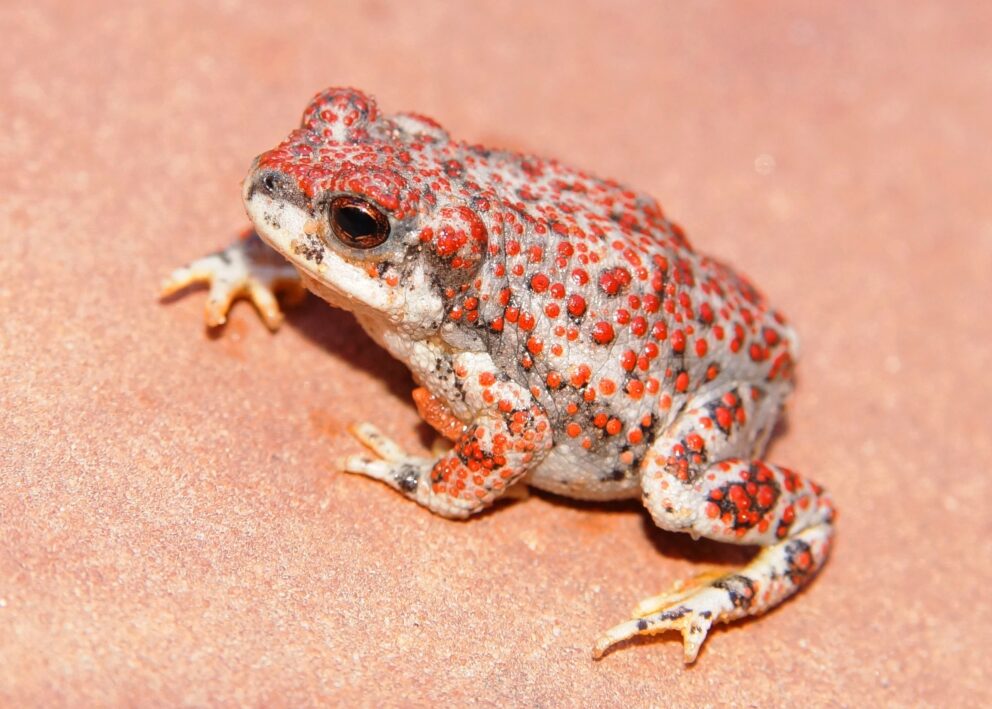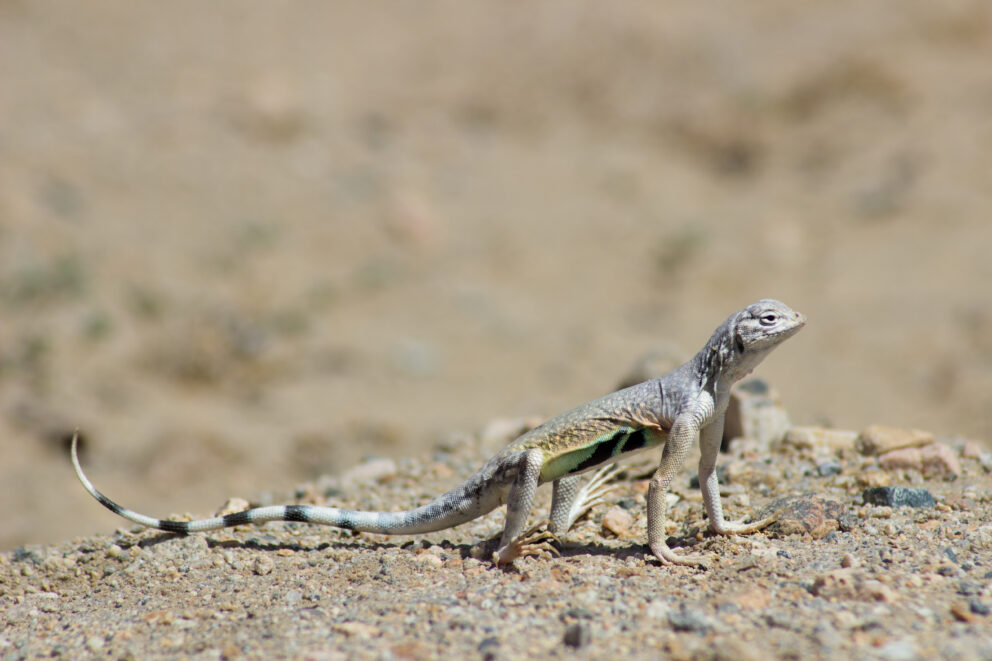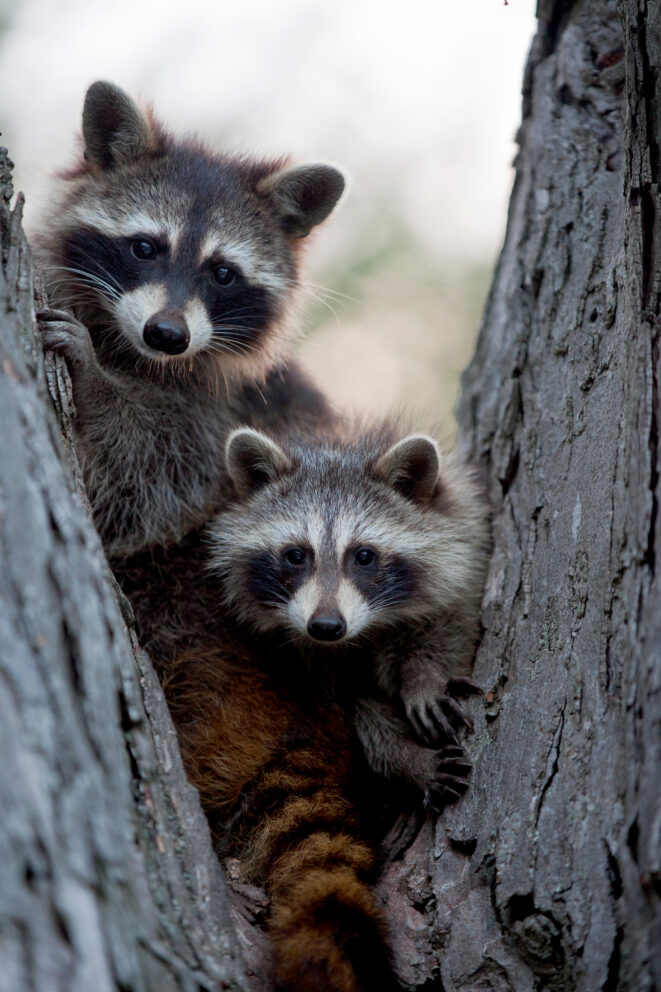- SCIENTIFIC NAME
- Anaxyrus cognatus
- CLASSIFICATION
- Amphibian
- LIFE SPAN
- 3-10 Years
- STATE CONSERVATION STATUS
-
- Priority Species
- FEDERAL CONSERVATION STATUS
- Least Concern
- GAME STATUS
- Non-Game
- Washoe
- Humboldt
- Pershing
- Churchill
- Mineral
- Lyon
- Douglas
- Carson City
- Storey
- Elko
- Lander
- Eureka
- White Pine
- Esmeralda
- Nye
- Lincoln
- Clark
Habitat & Range
Nevada marks the western edge of the Great Plains Toad’s range. These toads prefer open areas and grasslands in the arid desert. They prefer lower, wetter areas of the desert such as irrigation canals, flood plains, intermittent pools, and reservoirs.
- Grasslands
- Mojave desert
- Warm desert riparian
Threats
- Habitat Degradation
- Habitat Loss
- Invasive Species
- Water Diversion
Natural History
These desert dwelling toads escape the heat by burrowing and staying underground until temperatures are more favorable. They will stay underground in their burrows for extended periods of time, but rain triggers them to leave their burrows and breed.
These toads use shallow clear water sources to lay their eggs. They will use flooded areas, temporary pools of water, and small streams. Females will lay anywhere between 1,000 and 30,000 eggs, with the average being around 10,000 with eggs usually hatching in a week. Once tadpoles develop, they will leave the water within a month or so.
Adult Great Plains Toads eat a wide variety of invertebrates. One of their favorite foods are cutworms, but they will also eat beetles, moths, and flies, doing the majority of their foraging at night.
Fun Facts














